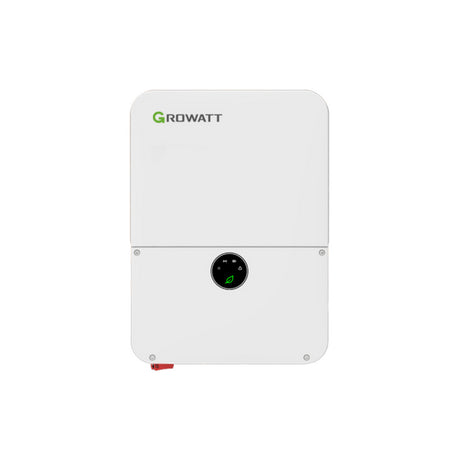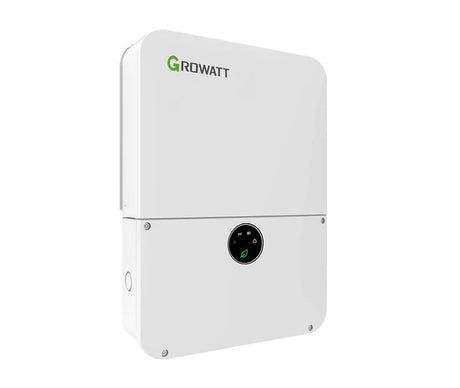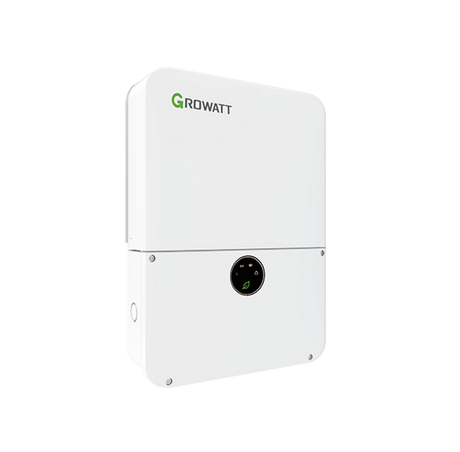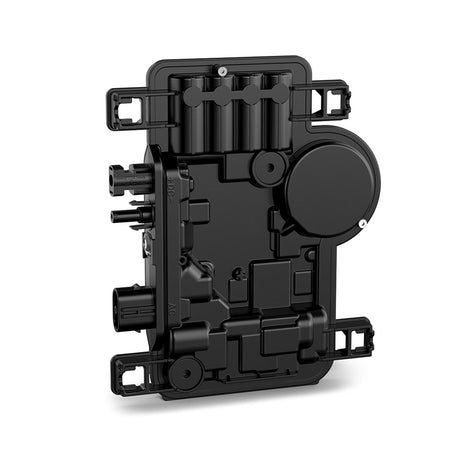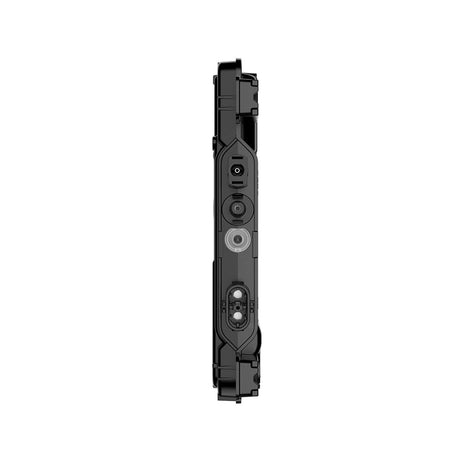- 13% off
Growatt
Growatt 11.4kW Grid-Tie Inverter (V3) | MIN11400TL-XH-US
$1,649.00$1,896.00Unit price /Unavailable Growatt
Growatt 6kW Grid-Tie Inverter (V2) | MIN 6000TL-XH-US
$1,199.00$1,499.00Unit price /Unavailable- 5% off
What Is a Grid-Tie Solar Inverter?
A grid-tie solar inverter is the heart of any grid-connected solar system, transforming DC electricity from your solar panels into usable AC power for your home. Unlike off-grid systems, these devices work seamlessly with your utility grid.
They enable you to use solar energy when available and draw from the grid when needed. With a rooftop solar system, a grid-tie inverter helps you reduce electricity bills without the need for more expensive battery storage. A standard grid-tie inverter does not provide backup power during outages unless it is paired with a battery system or a hybrid inverter.
How Grid-Tie Solar Inverters Work
Grid-tie solar inverters continuously monitor your solar panel output and synchronize with your utility grid's frequency and voltage. When your solar panels generate electricity, the inverter converts the DC power to AC power, feeding it directly into your home's electrical system. Excess energy flows back to the grid through net metering, earning you credits.
During peak demand or cloudy days, you automatically draw power from the grid. Modern string inverters and microinverters include rapid shutdown capabilities and maximum power point tracking (MPPT) to optimize energy harvest from every panel, ensuring your solar power system for home operates at peak efficiency throughout the day.
Features of a Quality Grid-Tie Solar Inverter
When investing in a grid-tie solar inverter, certain features separate premium models from basic options. Here are the essential capabilities that ensure maximum performance and reliability:
- High conversion efficiency. Look for inverters with 97% or higher efficiency ratings to minimize energy loss during DC to AC conversion.
- Advanced MPPT technology. Multiple MPPT channels allow optimal performance even with partial shading or different panel orientations on your rooftop.
- Smart monitoring capabilities. Real-time monitoring through mobile apps lets you track production, consumption, and savings from anywhere.
- Rapid shutdown compliance. NEC-compliant rapid shutdown ensures firefighter safety and meets modern electrical codes.
- Flexible sizing options. Whether choosing string inverters for simplicity or microinverters for panel-level optimization, ensure proper sizing for your system's growth.
Benefits of Grid-Tie Solar Inverters
There are several benefits of grid-tie solar technology, which transforms your home into an energy-saving powerhouse. Let’s examine each one in more detail:
1. Seamless Integration With the Grid
This is one of the key advantages of grid-tie inverters. Instead of storing excess energy in batteries, they feed surplus electricity from solar panels directly into the grid. This ensures reliable power and unlocks additional savings through net metering.
2. Cost Effectiveness and Affordability
Grid-tie inverters provide a smarter, more affordable way to harness renewable energy. Unlike off-grid systems that rely on battery backup, these devices connect directly to the power grid, thereby cutting installation and maintenance costs.
3. Maximum Energy Efficiency
Unlike battery-based systems that might lose 10-15% through storage inefficiency, grid-tie inverters deliver power directly to your home with minimal loss. Every kilowatt your panels produce translates into immediate savings, maximizing your return on investment.
4. Easy System Expansion
With modern grid-tie systems, you can start small and expand your solar system over time by adding more panels and inverters as your budget allows or energy needs increase. Microinverters make this especially easy with plug-and-play panel additions.
How to Choose the Right Grid-Tie Solar Inverter
Choosing the right grid-tie inverter requires matching your needs with the right technology. First, you need to calculate your system size based on energy consumption and available roof space.
For simple installations with unshaded panels facing the same direction, string inverters offer excellent value. However, if you have a complex roof with shading issues or multiple orientations, microinverters are a better option as they optimize each panel independently.
You need to consider your budget as well. String inverters cost less upfront, while microinverters provide better long-term performance in challenging conditions. Also, prioritize brands offering comprehensive warranties (10+ years) and strong local support networks for peace of mind.
Lastly, ensure the inverter's compatibility with your solar panels' specifications and verify it meets local grid requirements and rapid shutdown codes.
Grid-Tie Solar Inverters FAQs
1. What is the difference between grid-tie and off-grid inverters?
Grid-tie inverters synchronize with utility power and don't require batteries, making them more affordable and efficient. Off-grid inverters work independently with battery storage, providing power in remote locations without grid access.
2. Can a grid-tie inverter power my whole house?
Yes, when properly sized to match your solar array and electrical needs. Most residential systems range from 5-10kW, sufficient for average homes. During grid outages, standard grid-tie inverters shut down for safety unless equipped with battery backup capabilities.
3. Are grid-tie solar inverters compatible with all solar panels?
Most quality inverters work with standard 60 and 72-cell panels from major manufacturers. Check if the inverter's voltage and current ratings match your panels' specifications. String inverters need compatible panel strings, while microinverters offer more flexibility with mixed panel types.

